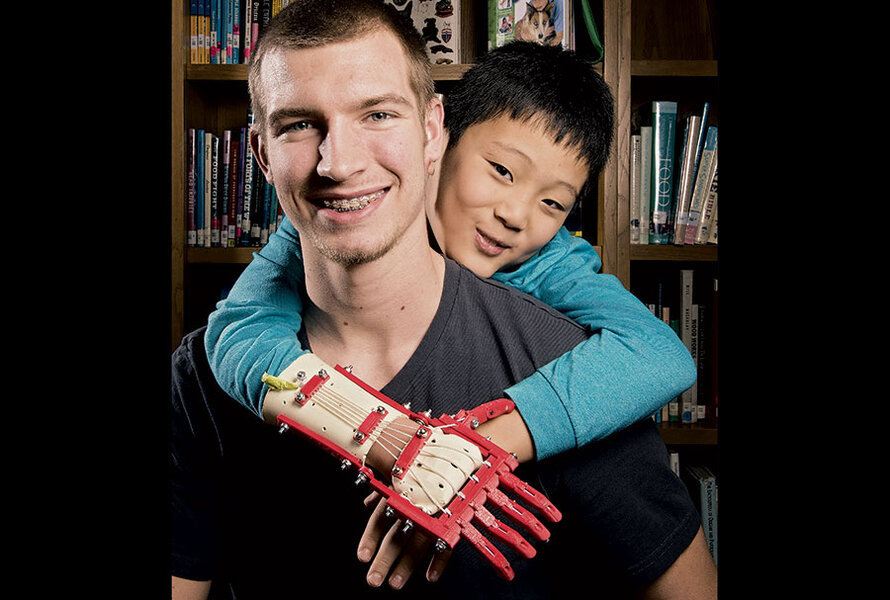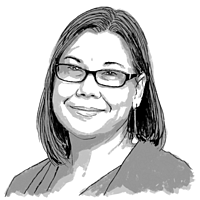How the 'maker movement' got a Kansas boy a new hand
When 9-year-old Matthew Shields came home from school last fall with his hand hidden inside his shirt, his mother, Jennifer Shields, knew that something was wrong.
Matthew was born without fingers on his right hand. He’d never been interested in a prosthesis because he felt he could do everything he needed to do. But he wasn’t prepared for the negative attention he received from classmates when he entered third grade at a new school in his rural community near Kansas City, Kan.
“He’s really a confident kid usually,” his mother says. “But this was different. He was socially isolated, hiding his hand, feeling bad about himself.”
Because a professional prosthesis costs tens of thousands of dollars, she wondered about the do-it-yourself option – which ultimately led to the Johnson County Library “makerspace,” stocked with design software, video equipment, sewing machines, soldering irons, and a 3-D printer. Online, Ms. Shields found a free, do-it-yourself 3-D printer design for a colorful prosthetic hand that could be manufactured with materials costing about $500.
“Once I saw it, I just knew it was a perfect match for me,” Matthew says. The Robohand design – by South African carpenter Richard Van As, who lost several fingers in a 2011 woodworking accident, and American theatrical designer Ivan Owen – has been used by 200 people all over the world to print their own hands.
Shields tried to decipher the plans on Robohand.net, but soon realized she needed help. So she reached out to a family friend, Mason Wilde, who was then 16.
Eager to help, Mason scaled the design to fit Matthew’s wrist and went to the communal library makerspace to print it out on the 3-D printer. He then figured out how to fit the printed parts together with cables, screws, and nuts from the local hardware store, and then how to connect the hand to a gauntlet made of a thermoplastic material used by orthopedists.
In the end, the materials cost less than $60.
Thanks to the growing push for open-source sharing of digital designs and ideas and the emergence of the modern maker renaissance of interdisciplinary community spaces like that of the Johnson County Library – these kinds of collaborations across generations and continents are happening all over the world.
With the flick of his wrist, Matthew can now open and close his new Robohand for gripping things. “The day we got to actually put it on his wrist, there were tears in his mother’s eye. And the look of excitement on [Matthew’s] face when we were doing it was just the best thing,” says Mason, who has since helped two other families print hands for their children and is in the process of launching a nonprofit robotic hand printing business true to the sharing spirit of the maker ethic.
“It was such a blessing having the Johnson County Library, where anybody can use the 3-D printer,” Shields says of the makerspace.






